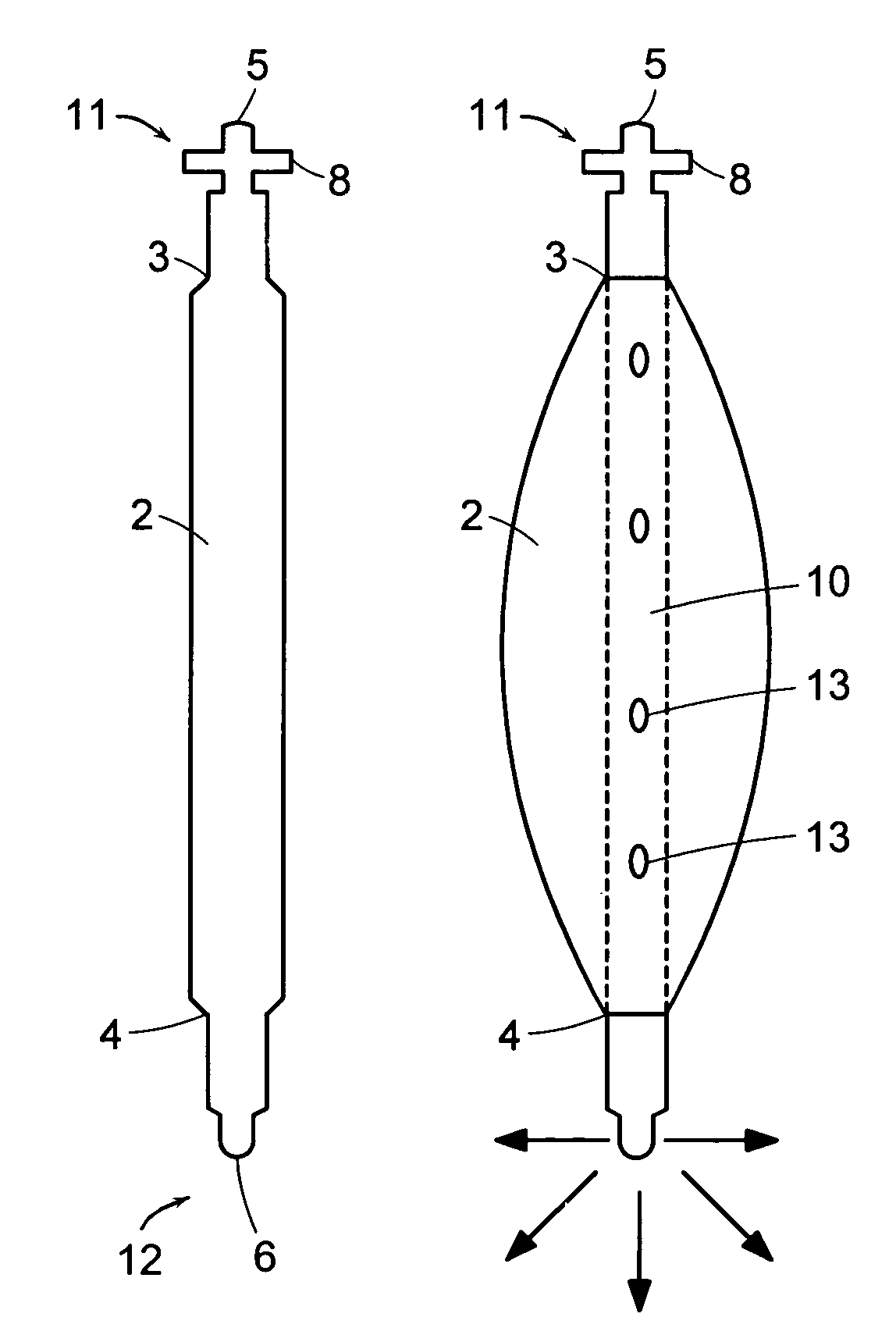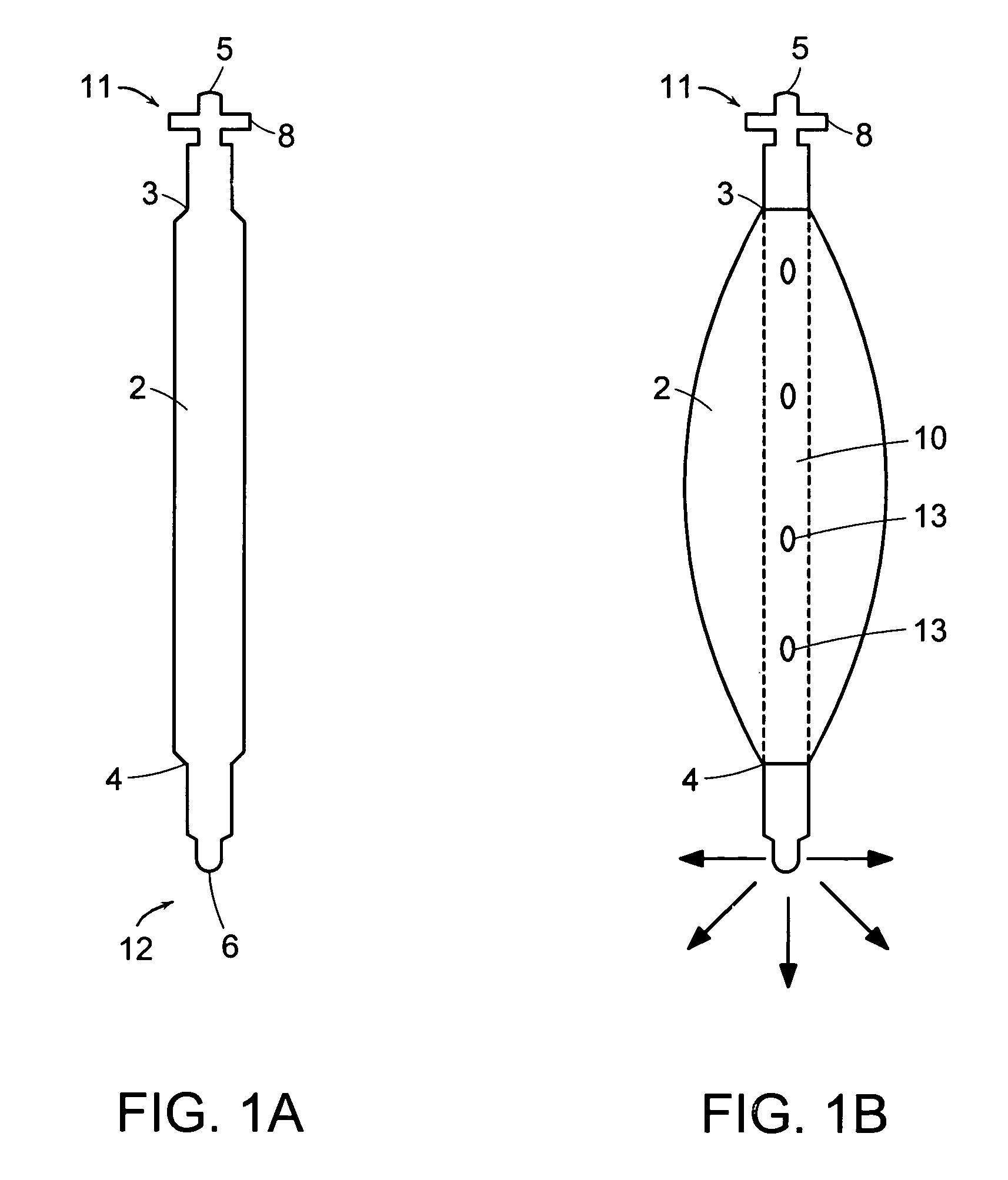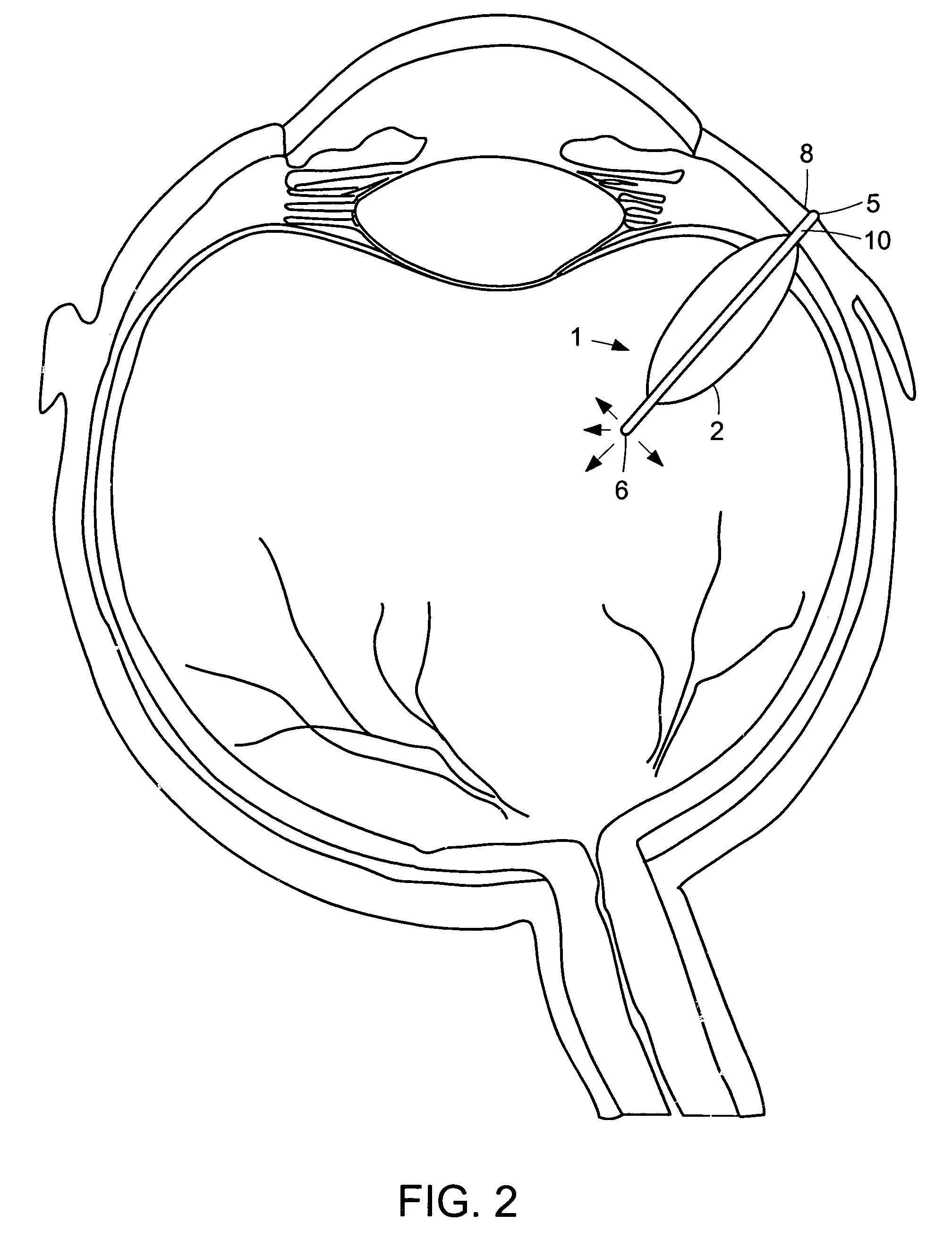Reservoir device for intraocular drug delivery
a reserve device and intraocular drug technology, applied in the field of improved delivery devices, can solve the problems of limited ocular absorption, high risk of systemic toxicity for patients, and difficult to fill and refill, so as to achieve easy filling and refilling, reduce risk, and reduce the effect of invasiveness
- Summary
- Abstract
- Description
- Claims
- Application Information
AI Technical Summary
Benefits of technology
Problems solved by technology
Method used
Image
Examples
Embodiment Construction
[0027]Referring now to the various figures of the drawing, wherein like reference characters refer to like parts, there is shown various views of a delivery device 1, in accordance with the invention.
[0028]As shown in FIGS. 1-3, the delivery device 1 includes a reservoir 2 having a proximal end 3 and a distal end 4. Located near the proximal end 3 of the reservoir 2 is an inlet port 5 for injection of a desired agent into the reservoir 1. Agent injected through the inlet port 5 is delivered to the treatment area through delivery mechanism 6.
[0029]The delivery device 1 may further include a hollow body or tube 10 housed at least partially within the reservoir 2. The hollow body or tube 10 has a proximal end 11 and a distal end 12. Preferably, the proximal end 11 of the hollow body or tube 10 extends outside the reservoir 2, as shown in FIGS. 1-3, and serves as the inlet port 5 through which the agent is injected into the device.
[0030]The materials used in fabricating the reservoir 2 ...
PUM
 Login to View More
Login to View More Abstract
Description
Claims
Application Information
 Login to View More
Login to View More - R&D
- Intellectual Property
- Life Sciences
- Materials
- Tech Scout
- Unparalleled Data Quality
- Higher Quality Content
- 60% Fewer Hallucinations
Browse by: Latest US Patents, China's latest patents, Technical Efficacy Thesaurus, Application Domain, Technology Topic, Popular Technical Reports.
© 2025 PatSnap. All rights reserved.Legal|Privacy policy|Modern Slavery Act Transparency Statement|Sitemap|About US| Contact US: help@patsnap.com



